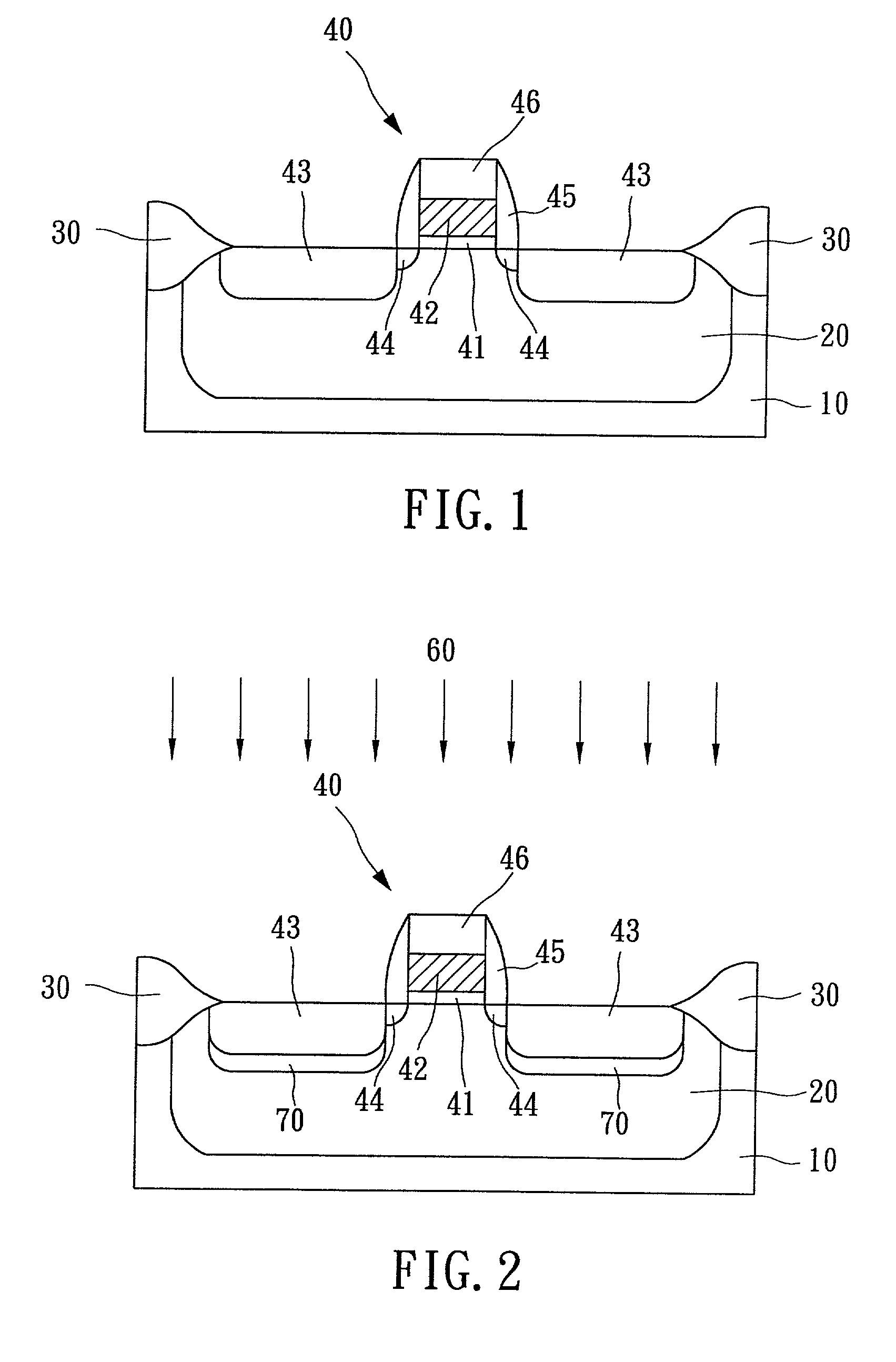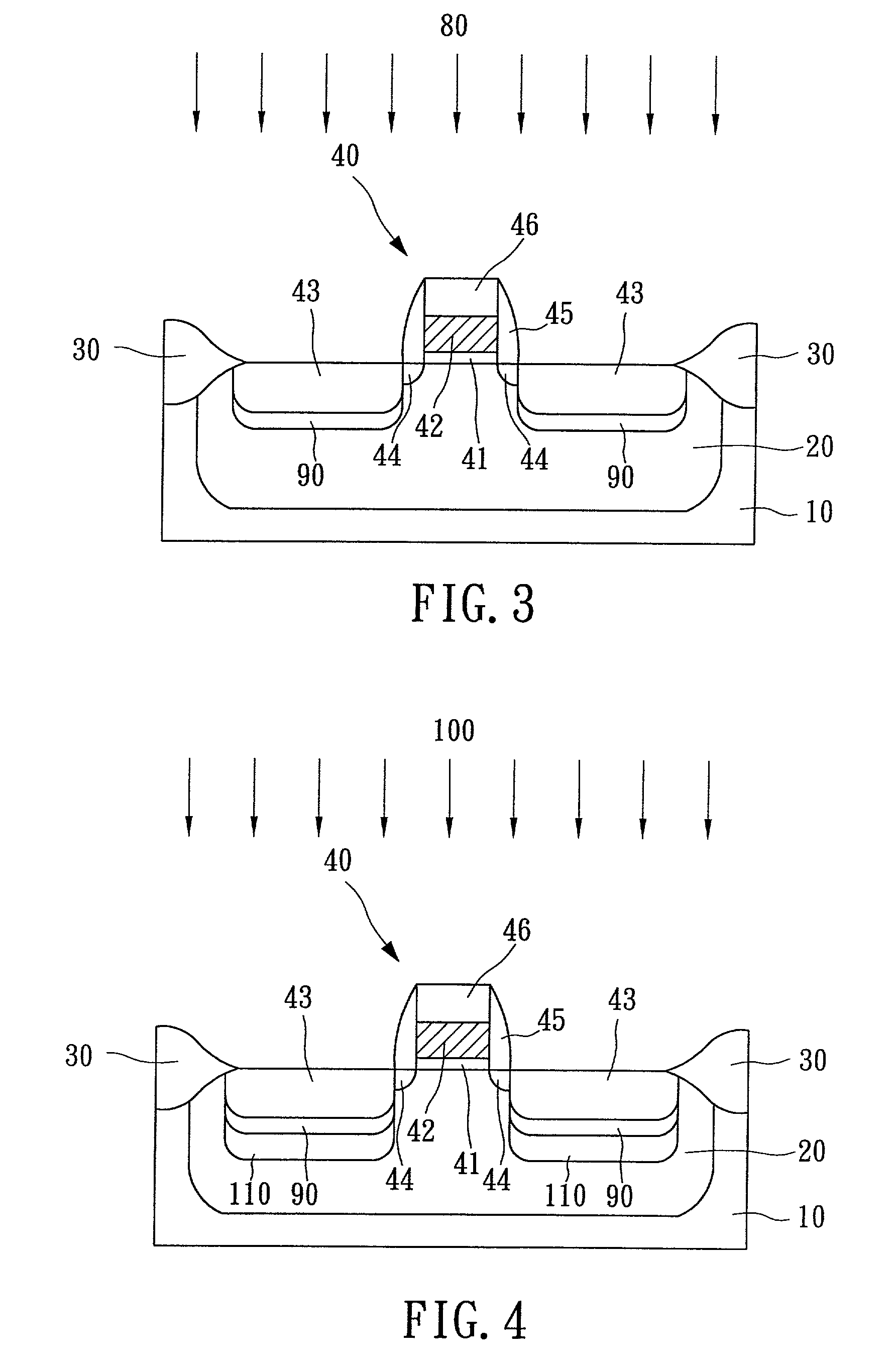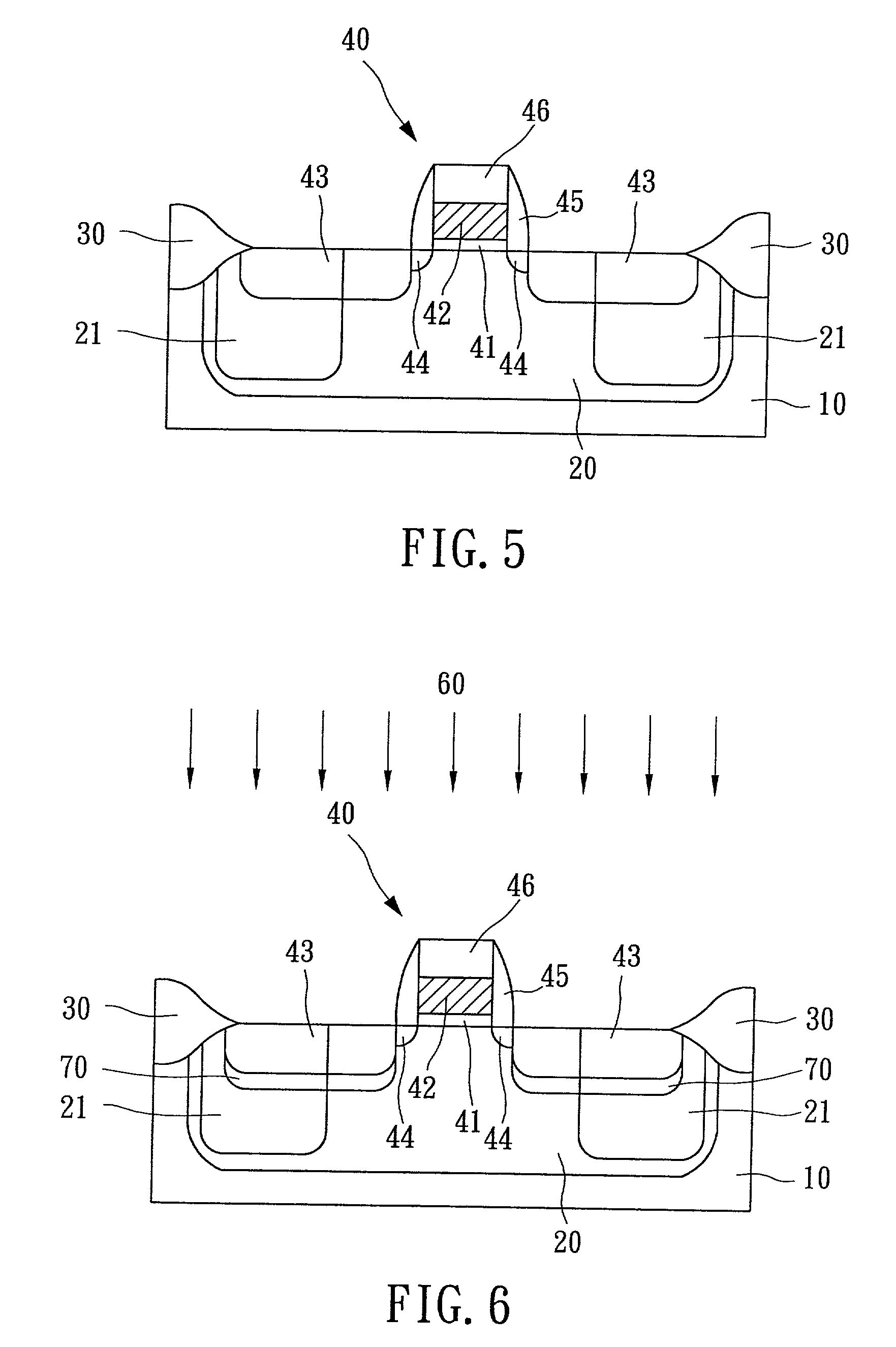Method of forming an ESD protection device
- Summary
- Abstract
- Description
- Claims
- Application Information
AI Technical Summary
Benefits of technology
Problems solved by technology
Method used
Image
Examples
second embodiment
[0027] An additional N.sup.+ implantation is applied to the source / drain regions in this embodiment in order to increase the depth of the PN junction. The devices obtained by this embodiment can not only reduce the breakdown voltage and increase response speed of PN junction as by the first embodiment, but also further enhance the ESD-current capability. In the following description for this embodiment, the processes and schematic diagrams for forming the P-well and MOS structure on the silicon substrate are totally the same with those in the first embodiment and thus not repeated. In addition, similar parts will be marked by similar numerals according to FIG. 1 to facilitate reading of the description.
[0028] Referring now to FIG. 3, an addition N.sup.+ junction-deepening implantation 80 is applied to form deeply-doped regions 90 under the source / drain regions 43. The deeply-doped regions 90 are formed via ion implantation of arsenic or phosphorous ions at an energy between 50 to 12...
third embodiment
[0032] An additional N.sup.+ implantation is applied to the source / drain regions in this embodiment in order to reduce the capacitance of PN junction. The devices obtained by this embodiment can not only reduce the breakdown voltage and increase response speed of PN junction as by the first embodiment, but also resolve the capacitance-increasing issue due to the ESD protection implantation.
[0033] Referring firstly to FIG. 5, a P-well 20 and N-wells 21 are formed in a semiconductor substrate 10 by using conventional photolithography and ion-implantation procedures. Next, isolations 30 are formed to separate each active region. The isolations 30 could be conventional LOCOS (Localized Oxidation Isolation) or STI (Shallow Trench Isolation).
[0034] The N-wells 21 are the key features of the present invention. In the conventional IC technology, the N-well is used for forming PMOS and the P-well is used for NMOS. Nevertheless, the design and layout of the photo mask according to this embodi...
PUM
 Login to View More
Login to View More Abstract
Description
Claims
Application Information
 Login to View More
Login to View More - R&D
- Intellectual Property
- Life Sciences
- Materials
- Tech Scout
- Unparalleled Data Quality
- Higher Quality Content
- 60% Fewer Hallucinations
Browse by: Latest US Patents, China's latest patents, Technical Efficacy Thesaurus, Application Domain, Technology Topic, Popular Technical Reports.
© 2025 PatSnap. All rights reserved.Legal|Privacy policy|Modern Slavery Act Transparency Statement|Sitemap|About US| Contact US: help@patsnap.com



